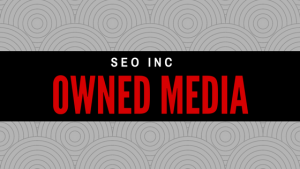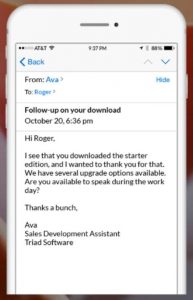Maybe you experimented with some extra social media sharing on a blog post, and started to notice that page rising through SERP rankings. Maybe you overheard a question or discussion about social media’s relationship with SEO. Maybe you were brainstorming ways to generate more backlinks and someone suggested Facebook.
It’s a common question with an easy answer, but the relationship between social media and SEO is bigger than a Yes or a No. SEO and social media are two crucial elements of any digital marketing strategy. It is important to know how they do and do not work together, so you can pair innovative ideas with tested truths for the most effective strategies.
Do Social Media Links Help SEO?
No.

Some marketers will point out that Google treats each social media post as an individual webpage, so a link from a social media page would appear to the search engine as a link from a unique page. And that’s true.
But, as Matt also states in that video, Google can’t crawl the entire social web. That means a lot of those links don’t get seen, much less indexed. Even if they did, we know that Google doesn’t weigh all links equally. Social media links are too easy to throw around for Google to take them seriously.
Do Social Media Follows and Likes Help SEO?
No.

Google does not have signals that would assign more or less authority to your website or brand name based on your social audience. Social media fluctuates too much, too quickly, for it to be a reliable source of authority.
The Real Relationship Between Social and SEO
SEO and social media both, in part, influence and rely on the popularity of a piece of content. That’s why studies like Searchmetrics’ Rebooting Ranking Factors produces charts like this one, that show a lot more Facebook shares on content that also ranks well in organic search:

The report shows similar charts for other social networks, including Google Plus and Twitter, but Searchmetrics came to the conclusion that the relationship was merely a correlation, not causation.
“This is primarily due to overlap between brand websites performing strongly in social networks and being allocated top positions by Google.”
A conclusion that Matt corroborates:
“That’s correlation, that’s not causation. Instead, it’s probably because there’s something really awesome, and because of something awesome, it gets a lot of likes on Facebook, and a lot of people decide to link to it.”
But that doesn’t mean that social media marketing and SEO can’t or shouldn’t be used together, or that social media can’t benefit SEO in other ways.
How Social Media DOES Help SEO
There are other SEO benefits to a good social media strategy. Many of them are not uncommon or revolutionary:
- Social media is an efficient way to get eyes on your content. If the content is good it will earn real, effective links on other blogs and/or websites when people who see it on social link to it on their websites.
- Traffic from social media can still create good on-site SEO signals. If the content is good (again) it will create click-throughs to other parts of the site, high time-on-site metrics, etc.
- An active social media account increases brand awareness. We’ve all seen ads or Facebook posts that we Googled later.
All good reasons to continue a strategic social marketing campaign, and to be encouraged that, if the content is good, it can help SEO without being involved in major ranking factors.
3 Next-Level Strategies for Using Social Media to Support SEO
With an accurate understanding of how social media and SEO really do work together, you can tweak your social media marketing strategy to maximize these SEO benefits.
Step 1, of course, is creating great content. Where great content can earn other links, create good signals, and improve brand awareness, bad content will create bad on-page signals and negative brand influence.
Great content assumed, here are three examples of how a brand can use the real relationship between social and SEO to optimize.
1. Create Content with a Social Hook that Targets Clicks
Marketers know what plays well on social media, especially for your audience. Social audiences like listicles, images and video get more real estate and more attention, and content that makes people laugh or cry gets shared.

But don’t end the strategy there. Create content that gets shared and clicked on social media, but targets more clicks on your site. Maybe it’s an irresistible CTA on a video. Maybe it’s a listicle that includes internal links to more helpful or entertaining content.
Don’t fall down the rabbit hole of creating thin, clickbait content. But do look at each piece of content before you share it on social media and ask yourself, “Where does the reader go from here?”
2. Integrate Your Social Media Content with Your ABM Strategy
Whether your business is deep into account-based marketing, just getting started, or marketing is still trying to convince the C-suite to try it, pairing content with social media marketing along an ABM strategy is simple, effective targeting.

As you create varying degrees of personalized content for your ABM campaign, give it a home on your website. It may not live in the site navigation, especially if it’s highly personalized for one or a few target accounts, but it should still be connected to the site.
Then, use existing relationships on social media, or even paid social ads, to share that content with its intended audience. Whether it’s one-to-one sharing, or sharing within a small, focused group, the content will be highly relevant to its audience and should, thus, inspire meaningful on-site engagement.
3. Design Landing Pages for Mobile Screens
Mobile internet usage is growing exponentially, but especially on social. Of course, your site is already mobile-friendly as you prepare for mobile-first indexing, but test a few landing pages or blog posts that are especially designed with smaller, vertical screens in mind—and use those with your social media marketing campaigns.
Some considerations might include:
- CTAs higher on the page
- Media that is always centered, and never wrapped with text
- Internal links and/or recommended, related content higher on the page
- Images and video that are either square or vertically-oriented
Browse a page that you’ve connected with a social marketing strategy on your smartphone. Even if it all works fine, ask yourself what could be better for the mobile user.
Social Media and SEO
Final verdict: social media does not directly contribute to page rankings; it is not a ranking signal.
But that doesn’t mean it can’t be used to help your SEO strategy. It is as useful as your team is creative. Set up some goals, A/B test some changes or experiments, and see how you can make the most of the relationship between social and SEO.
It starts, of course, with great content. Make sure your content is worth sharing before you start promoting it on social channels. Once it’s really ready, push your team outside the box—just make sure everyone remembers how social media and SEO really do work together, and how they don’t, as you develop strategies.
Digital & Social Articles on Business 2 Community(46)
Report Post





